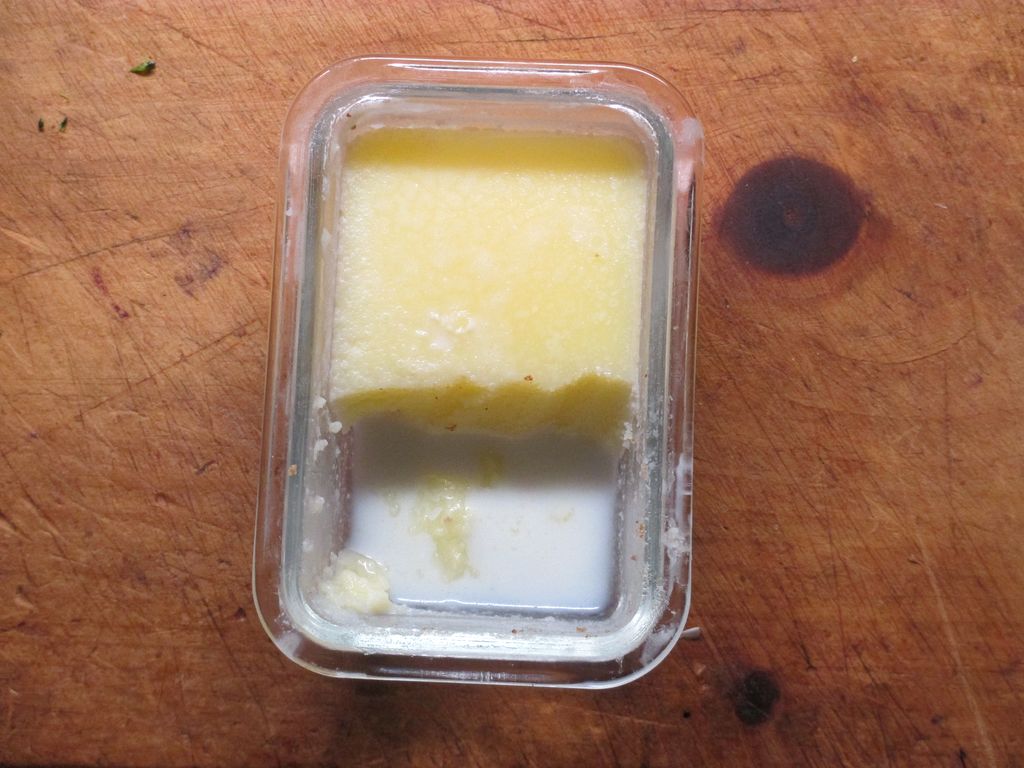It's widely known that, by design, mainstream American butter is 80% fat (cream), 15-18% water, with salt, flavorings, etc. making up the rest. I too have known that, but never experienced it.
For health reasons, I choose to limit my salt intake, so for a decade or more I've only bought unsalted butter. But recently I wanted to try some European butters, some of which are only available locally as salted. I have been shocked at how strong the salty-ness was! Especially the American butters. 100-110mg salt in a 14g serving is way too strong for my taste.
So I want to try, say, half that much. I took 1/2 stick each of salted and unsalted butter, melted and mixed them over low heat, poured it into a shallow glass storage dish, and let it solidify at room temp (about 70º).
I was surprised to find that a shallow pool of white liquid had settled at the bottom. It's the water. Not sure where the white comes from... anyone know?
The texture of the butter is quite different without the water. Melts and spreads easier. Color and taste are better, saltiness is about right.
I like the results. This might become a habit. Next time I'll weigh the sticks before, as well as the separated water, to verify the percentages.
It made me wonder how they manufacture it, to kept the water from separating. Some sort of flash cooling?

I always thought it's residual milk.
TomP
Makes sense.
you're halfway to making ghee, no?
Rob
Could be, I've never made it.
Which is easer to spread than plain butter (in this regard it is more like other animal fat spreads - chicken fat or tallow). Doesn't require refrigeration. And my wife makes it from unsalted butter. The process of making is to heat in a pan until the bubbles are at a certain stage and then pour into glass jars to set. A lot of moisture evaporates in the process.
-Jon
Sounds pretty much the same. Yes, if I heated it to a boil the water would evaporate, but not needed in my case, I can just pour it off.
essentially, you've created a version of clarified butter.
ghee would, as you say, require a bit more time on the heat.
Thanks for 'clarifying' that :)
...butter melts into 3 layers: top floaty white stuff is milk solids, then butterfat, bottom is water with more of those milk solids. I guess the middle layer is clarified butter, no?
I believe those white parts that settle are considered milk solids. It is the component of butter that makes it brown or burn at a lower temperature. If you pour off the butterfat and leave the milk solids you have created clarified butter.
As you can see, there was almost no "top floaty white stuff", just the butterfat and white liquid. I wonder if temperature makes a difference? I used minimal temp, just enough for it to melt slowly.
is more than congealed fat, the solidified fat is actually a crystal structure which is what gives it that great mouth feel.